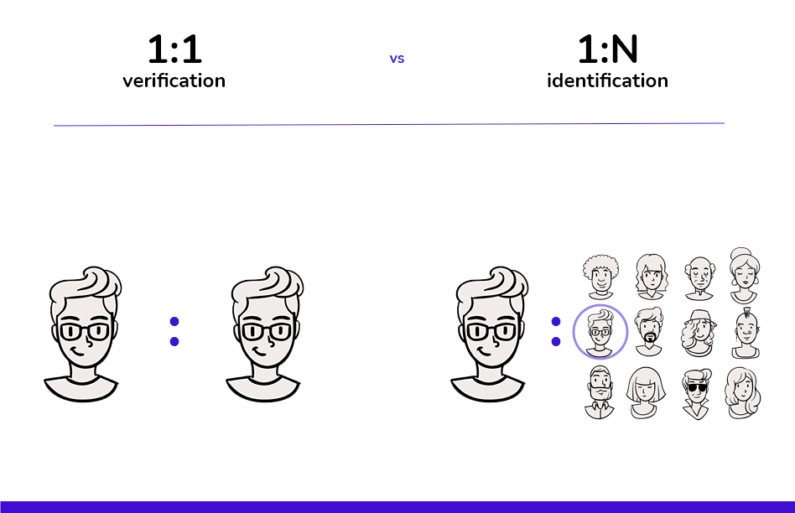Personal documentation is crucial in most modern societies. According to administrative rules, verifying identity is essential for various activities such as registering births, getting married, obtaining a job, accessing housing, healthcare, social benefits, education, and applying for official permits. Therefore, many countries have implemented national identity card systems capable of identifying the holder and certifying their marital status and nationality.
In most countries, legally resident foreigners receive a residence permit that also works as an identity document. For refugees, the lack of documents can be problematic, as they must prove both their identity and the legality of their presence in the country. In certain nations, lack of documentation can result in immediate detention or expulsion, which is especially serious for a refugee who may face the risk of being returned to their country of origin.
Refugees may be more likely than other foreigners to lack personal documentation due to the myriad circumstances that lead them to leave their countries.
Problems associated with lack of identification documents
Lack of documentation can create a number of additional problems. There are not just legal difficulties, such as detention or expulsion, but also obstacles to accessing basic services and social benefits. Without documents, they may encounter complications in obtaining healthcare, education, or employment, thus limiting their opportunities for integration and well-being in the host country.
This situation is not only unique to refugees in urban settings but also occurs in refugee camps and in countries with high levels of poverty. In these areas, identification can be even more complicated due to the lack of administrative infrastructure and the precarious conditions in which people live. Humanitarian aid organisations face significant challenges when trying to provide assistance to those without documentation, as a lack of identification can hinder the equitable distribution of resources and services.
Moreover, in contexts of conflict or crisis, the loss or destruction of documents is frequent, exacerbating the vulnerability of those affected. Lack of proper documentation affects the daily lives of refugees and can hinder their ability to receive international protection and access durable solutions, such as relocation or voluntary repatriation.
Before exploring possible solutions, let us take a look at the history.
Travel documents: A 1951 Convention solution
The 1951 Convention provides that Contracting States must issue travel documents to refugees lawfully within their territory. These documents allow refugees to move outside the territory of the Contracting State unless national security reasons prevent this. In addition, states are encouraged to treat those refugees who are unable to obtain a travel document from the country in which they are legally resident in a kind way.

Prior to the 1951 Convention, several international agreements had already been passed for the issuance of “identity certificates” or “Nansen passports” to refugees. These documents served both identification and travel document functions, facilitating the international movement of refugees.
The importance of article 27 and 28 of the Convention
The 1951 Convention took a more liberal approach compared to previous agreements, extending the issuance of travel and identity documents to a wider range of refugees, regardless of their legal status in the contracting country.
Article 28 of the Convention requires Contracting States to issue travel documents to refugees lawfully within their territory unless there are reasons of national security or public order which preclude this. States are also encouraged to issue such documents to any other refugee who would otherwise be left without a travel document.
For those refugees who are unable to obtain a travel document under Article 28, the Convention introduces Article 27, which obliges states to issue identity documents to all refugees who do not possess a valid travel document.
The purpose of Article 27 is to ensure that all refugees, including those not legally residing in the territory of the Contracting State, have at least one identity document. Although Article 27 does not specify the nature of the identity document, its purpose is to provide each refugee with the means to prove their identity, leaving to the discretion of each state the form and content of the document issued.
Do all countries apply the provisions of the Convention?
Although the 1951 Convention sets out clear obligations for Contracting States regarding the issuance of travel and identity documents for refugees, practices vary significantly between countries.
In general, states that have established refugee status determination procedures usually provide some form of documentation attesting to the identity and refugee status of persons recognised as refugees. This documentation can range from refugee certificates to identity documents that also serve as proof of the right to reside and work in the country. In some cases, recognised refugees are issued residence cards that serve identification functions.
Nevertheless, some countries do not have a system of national identity cards or residence permits. In these cases, recognised refugees may receive a letter confirming the approval of their application for asylum and/or refugee status.
On the other hand, in most states that are not parties to the Convention or the Protocol, refugees have no possibility of being officially recognised or obtaining identity documents accrediting them as refugees.
Furthermore, there are countries that, while parties to the Convention and the Protocol, continue to apply geographical limitations that restrict their responsibility to refugees as a result of developments in Europe.
Substitution of temporary identity documents
In many cases, refugees have lost their identity documents during their flight or have no possibility of being officially recognised as refugees. This scenario complicates the distribution of humanitarian aid and the formal recognition of their status.
We cannot forget that the primary objective of humanitarian assistance is to provide a needs-based emergency response aimed at saving lives, preventing and alleviating human suffering, and ensuring people’s dignity.
But what to do when more than 850 million people around the world are unidentified?
Undoubtedly, this represents a significant obstacle to the delivery of humanitarian aid. However, biometrics offers an effective interim solution to this problem. Facial recognition can close the gap between unidentified beneficiaries. This guarantees a more efficient delivery of assistance, ensuring that aid reaches those who really need it.
Registration of beneficiaries and distribution of aid
Humanitarian crises represent an increasingly complex challenge. They are often characterised by their severity, complexity, and protracted duration, affecting many countries in need of urgent assistance. These crises cover a wide range of conflicts, including armed conflicts. There is a worrying trend toward the prevention of these crises, with more than 75% of international humanitarian assistance going to long-term beneficiaries.
In response, there is a clear international consensus on the need to maximise the use of social protection systems and approaches in fragile and conflict-affected environments. This approach seeks to provide more effective and sustainable responses to address the needs of affected populations, including through efficient and secure identity management.
Biometrics offers a solution in this regard by enabling the unique and secure registration of refugees by capturing their facial features. This ensures that people can preserve their identity, in other words, be who they really are. It also ensures that the distribution of resources is fairer and more equitable, even in situations where identity documents are not available.
In the context of refugee camps, where official documentation may be scarce or non-existent, biometrics applied to humanitarian aid becomes an invaluable resource. Two main biometric approaches are used: 1:1 verification and 1:N identification.
1:1 Verification of beneficiaries
1:1 verification consists of comparing the biometrics submitted by a person with a single record in the database to confirm their identity. This method is used to verify that the person presenting is who they claim to be. It is called 1:1 because an individual’s biometrics are compared against a single biometric profile. For instance, a refugee may present their face, which is compared with their biometric template recorded in their personal file. If they match, the identity is verified, and the person can receive assistance.
1:N Biometric identification in refugee camps
This involves comparing the biometrics submitted against all records in a centralised database to identify one person among many. This method is essential to avoid duplication and fraud, ensuring that each beneficiary is registered only once and receives the appropriate assistance. In a refugee camp, this system allows a new refugee to be quickly identified from among thousands of registrations by a single biometric, such as a photo.
Biometrics applied to humanitarian aid facilitates the more efficient delivery of supplies, not only food but also cash transfers. This method improves the accuracy and integrity of interventions, offering a robust solution to the problems of duplicate beneficiary records. By implementing biometric systems, donors and institutions can have greater control over the destination of aid, ensuring that each person receives the assistance they need, significantly reducing the risk of fraud and increasing transparency in the distribution of resources.

It’s also worth mentioning that biometrics can help relevant agencies issue ration cards accurately to a specific camp. This would replace the need to transport large volumes of food between countries, thus simplifying the logistical process and ensuring more efficient distribution of supplies.
The use of biometrics in asylum applications
Another application of biometrics is the asylum application process, which aims to manage and verify applicants’ identities.
Biometrics are used to verify the identity of asylum seekers, ensuring that their applications are processed efficiently. This process involves the collection of biometric data to prevent fraud and ensure that the documents presented are authentic. Biometric verification helps prevent multiple registrations by the same person, thus guaranteeing a fairer and more orderly handling of asylum cases.
Voice biometrics for humanitarian call centers
Another technology that is gaining momentum in this field is voice biometrics, especially in call centres dedicated to providing support and services to affected communities.
Humanitarian call centres are vital for managing communication between aid organisations and their beneficiaries. These call centres not only provide direct assistance but also collect feedback, handle complaints, and provide critical information in times of crisis. Integrating voice biometrics into these centres can significantly improve the efficiency and security of the service.
Nicknames and biometric authentication
One of the challenges in providing services through call centres is identifying users quickly and securely. Traditionally, this has been achieved through security questions, identification codes, or nicknames, but these methods can be susceptible to error and fraud.
In addition, having to provide personal data can often embarrass beneficiaries for a variety of reasons, including situations of vulnerability or stigmatisation.
With voice biometrics, aid recipients only have to record their voice with a fixed phrase initially. Their voice is recorded and associated with their biometric profile, creating a secure and easy form of authentication.
Community feedback management
Voice biometrics also facilitates the management of community feedback. When beneficiaries communicate with Community Feedback Management, which acts as a call centre to manage and respond to community needs, their identity can be instant.
Inclusive facial biometrics for social aid programmes (NGOs or charities)
Facial biometrics is becoming a beneficial tool for NGOs in terms of the implementation of social aid programmes, as it ensures effective targeting and tracking. Some of the use cases in which it finds application are the following:
Integration of biometrics in cash distribution
Cash distribution is a key strategy for providing immediate and flexible support to vulnerable families. Nevertheless, one of the biggest challenges is ensuring that funds reach the intended recipients and are used appropriately. Facial biometrics provides an effective solution to this problem.
Implementing facial biometrics in the enrolment process allows for the creation of a secure database of beneficiaries. By capturing and storing unique facial features, organisations can ensure that each individual is registered only once, thereby avoiding duplication and fraud. During cash distribution, biometric verification ensures that funds are delivered only to registered individuals, maintaining the integrity of the programme.
Biometric access to microfinance
In addition to cash distribution, access to microfinance, such as loans, is crucial for helping households at risk of financial exclusion improve their long-term economic situation. Inclusive biometrics play an important role in this context by facilitating equitable access to these services.
The use of facial biometrics applied to humanitarian aid also facilitates programme monitoring and evaluation. By verifying the identity of borrowers at each stage of the process, organisations can monitor loan use and ensure that programme objectives are being met. This improves transparency and accountability, allowing for timely adjustments to maximise the impact of aid.
Effective targeting and building resilience
Effective targeting is essential to maximise the impact of social assistance programmes. Facial biometrics can accurately identify and register the beneficiaries most in need, ensuring that resources are distributed equitably. Moreover, a quick response can make the difference between recovery and worsening of the situation for families receiving aid.
The integration of this type of biometrics can improve efficiency and contribute significantly to increasing the resilience of households at risk of exclusion. When aid reaches those who need it most, it creates sustainable livelihoods and helps families to be better prepared to cope with possible future risks.
Delivering food to food banks or shopping vouchers with biometrics
Inclusive biometrics also improves food delivery in food banks and similar organisations. Biometric registration enables the verification of beneficiaries and facilitates the distribution of food parcels or shopping vouchers with biometric authentication.
The vouchers allow beneficiaries to purchase food directly from local shops, helping to meet growing demand without the need to mobilise staff and volunteers to manage supplies directly.
Contact us if you are looking for an identity verification solution that uses biometrics in humanitarian aid contexts to ensure that identity is not lost, recorded multiple times, or subject to fraud..

I am a curious mind with knowledge of laws, marketing, and business. A words alchemist, deeply in love with neuromarketing and copywriting, who helps Mobbeel to keep growing.

PRODUCT BROCHURE




